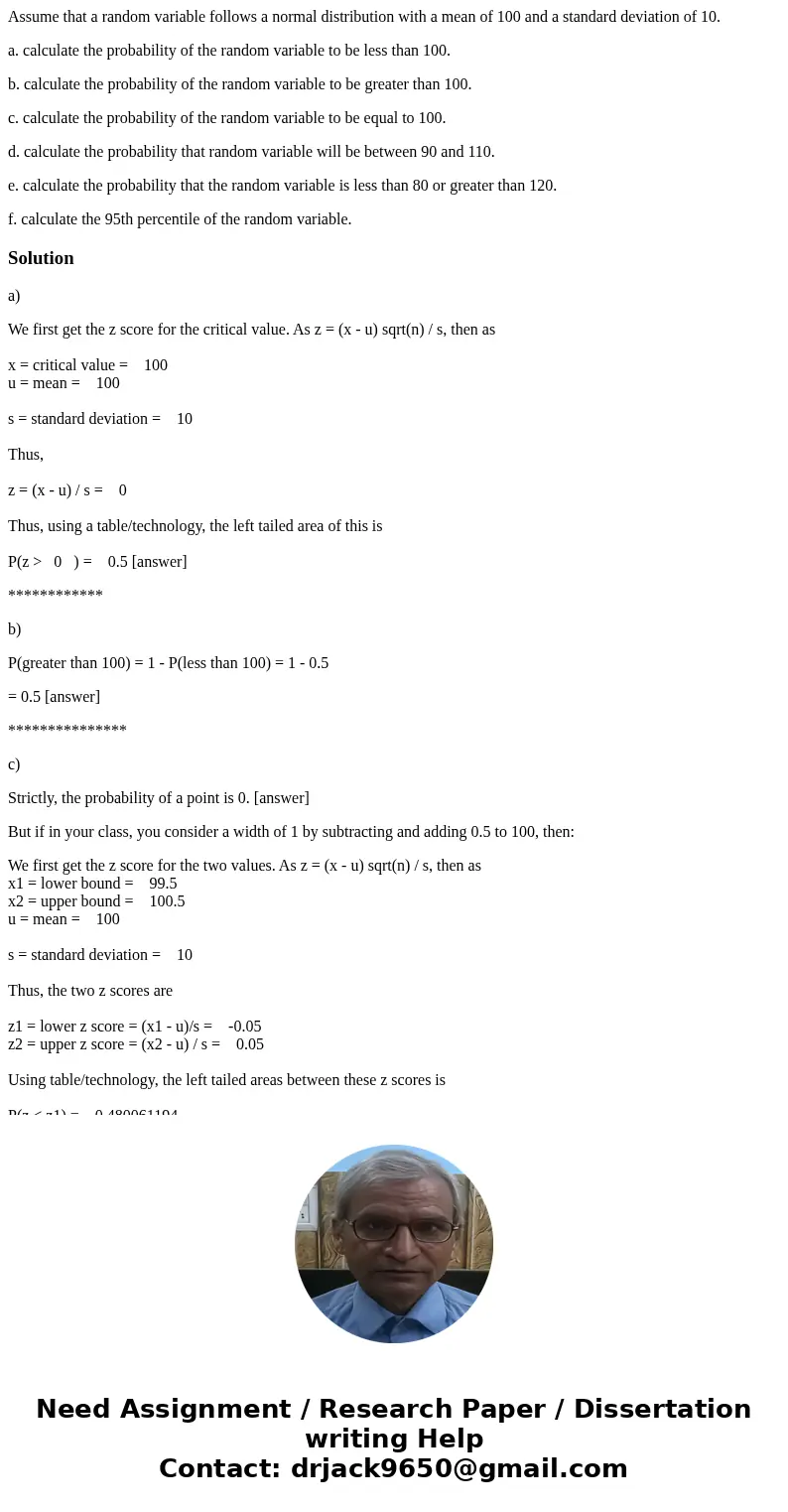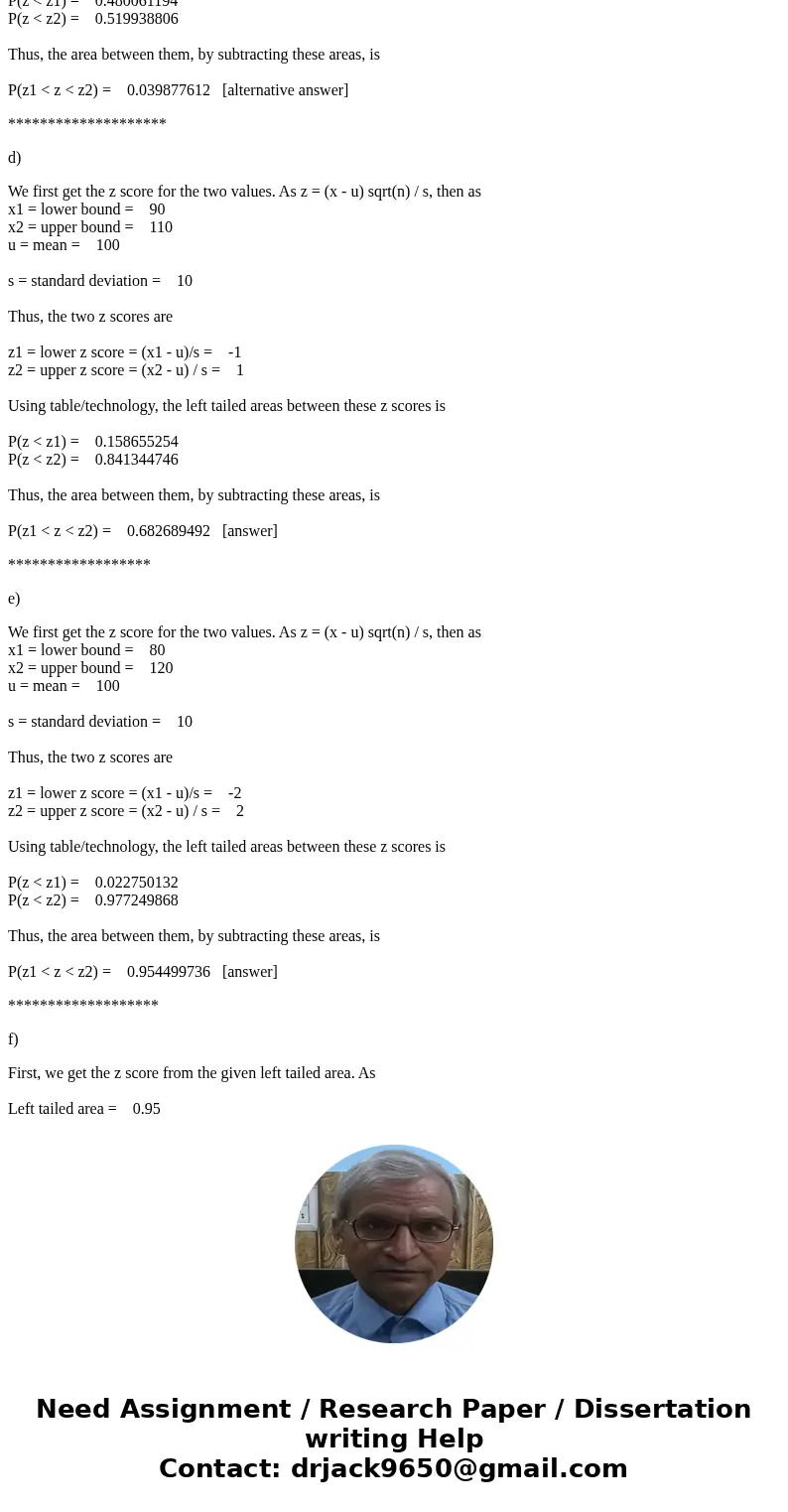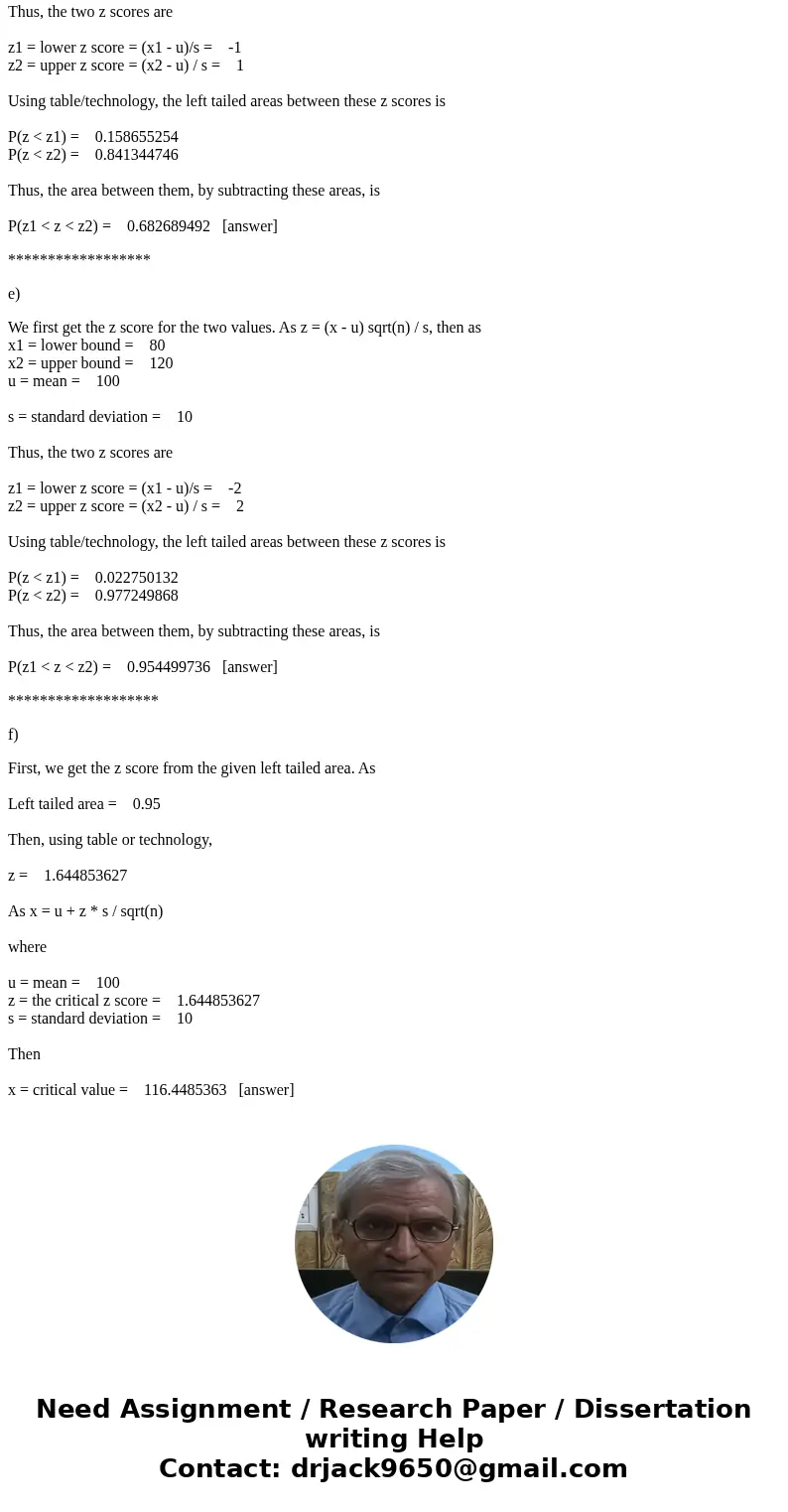Assume that a random variable follows a normal distribution
Assume that a random variable follows a normal distribution with a mean of 100 and a standard deviation of 10.
a. calculate the probability of the random variable to be less than 100.
b. calculate the probability of the random variable to be greater than 100.
c. calculate the probability of the random variable to be equal to 100.
d. calculate the probability that random variable will be between 90 and 110.
e. calculate the probability that the random variable is less than 80 or greater than 120.
f. calculate the 95th percentile of the random variable.
Solution
a)
We first get the z score for the critical value. As z = (x - u) sqrt(n) / s, then as
x = critical value = 100
u = mean = 100
s = standard deviation = 10
Thus,
z = (x - u) / s = 0
Thus, using a table/technology, the left tailed area of this is
P(z > 0 ) = 0.5 [answer]
************
b)
P(greater than 100) = 1 - P(less than 100) = 1 - 0.5
= 0.5 [answer]
***************
c)
Strictly, the probability of a point is 0. [answer]
But if in your class, you consider a width of 1 by subtracting and adding 0.5 to 100, then:
We first get the z score for the two values. As z = (x - u) sqrt(n) / s, then as
x1 = lower bound = 99.5
x2 = upper bound = 100.5
u = mean = 100
s = standard deviation = 10
Thus, the two z scores are
z1 = lower z score = (x1 - u)/s = -0.05
z2 = upper z score = (x2 - u) / s = 0.05
Using table/technology, the left tailed areas between these z scores is
P(z < z1) = 0.480061194
P(z < z2) = 0.519938806
Thus, the area between them, by subtracting these areas, is
P(z1 < z < z2) = 0.039877612 [alternative answer]
********************
d)
We first get the z score for the two values. As z = (x - u) sqrt(n) / s, then as
x1 = lower bound = 90
x2 = upper bound = 110
u = mean = 100
s = standard deviation = 10
Thus, the two z scores are
z1 = lower z score = (x1 - u)/s = -1
z2 = upper z score = (x2 - u) / s = 1
Using table/technology, the left tailed areas between these z scores is
P(z < z1) = 0.158655254
P(z < z2) = 0.841344746
Thus, the area between them, by subtracting these areas, is
P(z1 < z < z2) = 0.682689492 [answer]
******************
e)
We first get the z score for the two values. As z = (x - u) sqrt(n) / s, then as
x1 = lower bound = 80
x2 = upper bound = 120
u = mean = 100
s = standard deviation = 10
Thus, the two z scores are
z1 = lower z score = (x1 - u)/s = -2
z2 = upper z score = (x2 - u) / s = 2
Using table/technology, the left tailed areas between these z scores is
P(z < z1) = 0.022750132
P(z < z2) = 0.977249868
Thus, the area between them, by subtracting these areas, is
P(z1 < z < z2) = 0.954499736 [answer]
*******************
f)
First, we get the z score from the given left tailed area. As
Left tailed area = 0.95
Then, using table or technology,
z = 1.644853627
As x = u + z * s / sqrt(n)
where
u = mean = 100
z = the critical z score = 1.644853627
s = standard deviation = 10
Then
x = critical value = 116.4485363 [answer]



 Homework Sourse
Homework Sourse